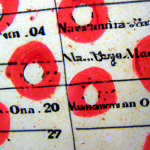What are Compounds Consisting Primarily of Carbon, Hydrogen, and Oxygen?
Compounds that consist primarily of carbon, hydrogen, and oxygen are known as organic compounds. These compounds play a crucial role in various biological processes and are the building blocks of life. In this article, we will explore the main elements found in carbon, hydrogen, and oxygen compounds and their significance.
Carbon
Carbon is the fundamental element in organic compounds. It has the unique ability to form stable covalent bonds with other carbon atoms, allowing for the creation of long chains and complex structures. This property, known as catenation, is what makes carbon so versatile and essential for life.
Carbon-based compounds can exist in various forms, including hydrocarbons, alcohols, aldehydes, ketones, carboxylic acids, and many more. Each of these compounds has its own distinct properties and functions.
Hydrogen
Hydrogen is the most abundant element in the universe and plays a vital role in organic compounds. It forms covalent bonds with carbon, oxygen, and other elements, contributing to the stability and reactivity of organic molecules.
In organic compounds, hydrogen atoms often act as functional groups, influencing the compound’s chemical properties and reactions. For example, hydroxyl groups (-OH) in alcohols and carboxyl groups (-COOH) in carboxylic acids are essential for their respective functions.
Oxygen
Oxygen is another crucial element in organic compounds. It is highly electronegative, meaning it attracts electrons towards itself in a covalent bond. This property makes oxygen a key player in the formation of polar bonds and functional groups.
Oxygen is commonly found in organic compounds as hydroxyl groups (-OH), carbonyl groups (C=O), and ether groups (C-O-C). These functional groups contribute to the compound’s reactivity, solubility, and overall chemical behavior.
Significance of Carbon, Hydrogen, and Oxygen Compounds
Carbon, hydrogen, and oxygen compounds are essential for life as we know it. They form the basis of carbohydrates, lipids, proteins, and nucleic acids, which are the major biomolecules found in living organisms.
Carbohydrates, such as glucose and cellulose, provide energy for cellular processes and serve as structural components in plants. Lipids, including fats and oils, are crucial for energy storage and insulation. Proteins are involved in various biological functions, such as enzyme catalysis, cell signaling, and structural support. Nucleic acids, like DNA and RNA, carry genetic information and play a vital role in protein synthesis.
In conclusion, compounds consisting primarily of carbon, hydrogen, and oxygen are the building blocks of life. Carbon’s unique ability to form stable covalent bonds, along with hydrogen and oxygen’s contributions, allows for the creation of diverse organic compounds with different functions and properties. Understanding these elements and their significance is crucial for comprehending the complexity of biological systems and the chemical processes that drive life.




